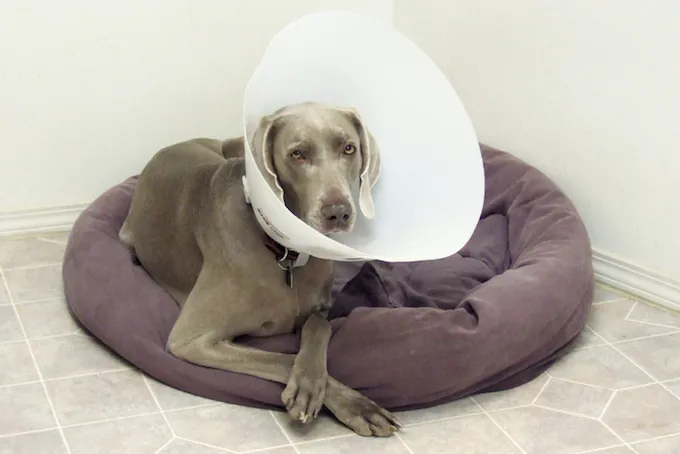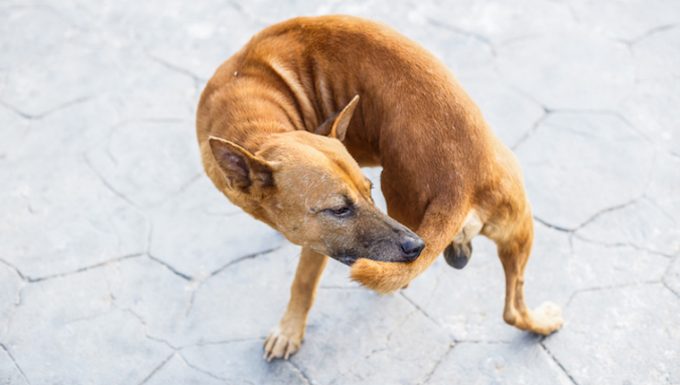Happy tail syndrome in dogs happens when a dog wags their tail too much. As the tail keeps hitting nearby surfaces, it can cause nerve damage and infection.
Generally, larger dogs with thin tails suffer from the condition the most.
Unfortunately, in some severe cases of the condition, amputating the tail is the only treatment.
If you see the signs of happy tail syndrome in your dog, then get to a veterinarian for a proper diagnosis and treatment.
Here’s what you should know about the symptoms, causes, and treatments for the condition.
Symptoms of Happy Tail Syndrome in Dogs
The condition produces symptoms that affect the tail. For example, some of the most common symptoms include:
- Bleeding
- Bald patches
- Biting the tail excessively
Causes of Happy Tail Syndrome in Dogs

The cause of the condition is a dog wagging their tail too enthusiastically and too often. Wagging a tail can mean a dog is happy, but the condition can also prove to be a serious one.
Additionally, certain types of dog suffer from the condition more than others. Dog breeds that are large and have thin tails are most at risk. For example, these breeds often suffer from the condition:
- Great Danes
- Greyhounds
- Pit Bulls
- Boxers
- Dalmatians
- German Shepherds
- Pointers
- American Bulldogs
Treatments for Happy Tail Syndrome in Dogs
Firstly, your vet will ask about your dog’s symptoms. Secondly, your vet will ask about your dog’s medical history. This will include any breed-specific issues.
Thirdly, a full physical examination will be carried out. Most cases of the condition can be diagnosed at this point.
Treatment of the condition can prove to be tricky. First, your vet will attempt to clean any wounds and bandage your dog’s tail.
Secondly, sedatives can be used. This is so that your dog does not damage their tail while recovering. As always, if your vet prescribes your dog any medicine, make sure to stick to the correct dose and frequency instructions. Also, complete the full course of medicine.
Next, supplements can be tried. These include omega-3 fatty acids. Additionally, topical vitamin E oil can help with cracked skin.
While recovering, your dog will need to wear an Elizabethan collar. This is to stop them from aggravating any tail wounds.
Unfortunately, in severe cases of the condition, part of a dog’s tail will need to be amputated. Although always get a second opinion if this is recommended as an option for your dog.
Have you ever cared for a dog who suffered from this condition? How did your vet help your dog recover? Let us know in the comments section below.









